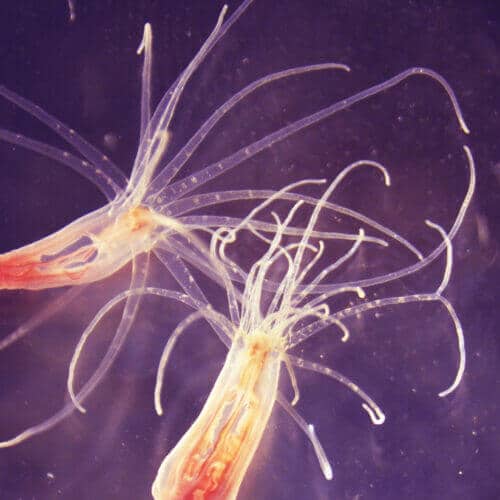It is an efficient mechanism that developed independently and simultaneously, in different groups of animals during evolution and in different forms. The big questions that remain open about most toxins is what their origin is, how they are produced in the living body and how they have evolved.?

Venom allows small and physically weak animals, such as scorpions, snakes, spiders and even certain species of snails, to defend themselves against larger and much stronger animals. It usually comes as "compensation" for an animal with a fragile and slow body structure to kill its enemies easily and quickly. Usually large, fast and strong animals are not characterized by the ability to be poisonous. Therefore, humans did not develop venom during their evolution.
The venom itself is a mixture of toxic proteins called toxins for short, which the animal produces in its body and injects it into another animal. It is an efficient mechanism that developed independently and simultaneously, in different groups of animals during evolution and in different forms. The big questions that remain open about most toxins is what their origin is, how they are produced in the living body and how they evolved evolutionarily.
A research group led by Prof. Yehu Moran from the Department of Ecology, Evolution and Behavior at the Hebrew University, studies the evolution of toxins in sea anemones, relatives of the jellyfish and corals. The reason the researchers studied this unusual animal lies in the ability to grow it in a laboratory and genetically engineer it, an ability that is not available for most venomous animals. Until now it was known that the sea anemone has a venom consisting of a neurotoxin whose role is to paralyze light prey such as fish and crabs and is also used to protect the anemone from predators. For humans the venom is not fatal but can cause swelling. On the other hand, there are several species of sea lilies, mainly the species Actinodendron arboreum and Phyllodiscus semoni and the members of the Stichodactylidae family that can be violent and cause through their venom an anaphylactic shock and impairment of kidney and respiratory function, situations that may develop into serious injury to a person and even death.

In a new study carried out in the laboratory of Prof. Yehu Moran from the Silverman Institute of Life Sciences at the Hebrew University of Jerusalem, Published this week in the prestigious journal of the American Academy of Sciences PNAS, the researchers discovered that the sea lilies "raised" their venom through their own nervous system. In fact, in a brilliant and surprising evolutionary process, the genes coding for neuropeptides (small proteins on which a substance that plays an important role in the transmission of nerve signals is transferred) were duplicated, and the new genes began to act in the venom system instead of the sea lily's nervous system. When the sea lily is attacked by a fish that tries to devour it, it injects it with the neuro-peptides that have become toxins and thus causes it to feel pain. In fact, this is the first time in science that it has been proven that any animal in nature was able to mobilize a toxin from its own nervous system.
"Venom is an attack tool of the animal that has evolved over and over again during evolution. Snakes, jellyfish, certain snails have it but it is not certain that the ancestor of those animals had venom at all. It is also known that this development was done independently. When venom evolves so many times, the questions arise as to where it comes from, what is its source, how does a snake, spider, or wasp suddenly have the sophisticated mixture of substances that act on the nervous system and harm the animal they attack? A lot of questions, the rabbi of the hidden over the visible", Prof. Moran notes.
Despite the mystery surrounding the venom, this research succeeds in uncovering the evolutionary history that allowed the sea urchins, small and soft creatures with no mobility, armor or skeleton to develop a successful defense mechanism. The sea anemones are an ancient group of animals that were among the first to appear on Earth and today live all over the oceans, which indicates their great success in using their own venom for defense purposes. "It is an animal with a simple nervous system, without armor and in general they are very soft animals, and despite that for hundreds of millions of years they have survived in every corner of the oceans. Their evolutionary success can be attributed to their venom. It is likely that this mechanism of venom production is shared by many other animals, and the main reason it has not been revealed to date is that very few studies have focused on the nervous system of these venomous animals, but mainly on snake venom, which can be dangerous to humans and fatal." Prof. Moran summarizes the findings of his research.
More of the topic in Hayadan:

3 תגובות
Who said we don't have venom? We have exactly the same proteins in every cell of the body in an organelle called a lysosome.
The reason it is not toxic is that it is contained in an organ. If the organelle is ruptured, the cell will die. The function of this organ is to break down foreign factors and old proteins. As far as I know, every living creature has such organelles in every cell of their body. The jump from lysosome to actual venom is simply a matter of greater concentration. None of this is new.
Hey, I'm a weak animal, pleasant to look at, and delicious to the palate...but, I have to invent something that will protect me, one that will defeat the strong...mmm
there is! Found! venom! stamp! Harms their nervous system..yes! Really James Bond behavior of nature..
How many can be captives in this theory... And precisely man at the beginning of his development was the weakest of all the animals, but he chose to work hard and make sure to develop cells in the brain to get lunch, than to develop venom to kill immediately and on that occasion also a meal... Oops, my plan went wrong, thought the giraffe, I wanted something that would kill from above...
As we know, there are many poisonous animals, some of them even have poisonous meat for anyone who tries to eat them, but most of the poisonous animals are equipped with sophisticated mechanisms such as...bells that fire quickly like the poisonous sea cone, or cells that explode and release poison such as...jellyfish and usually have reverse microscopic memorization, That is, they cannot be removed without damage or tissue tearing, and there are many examples, they themselves are immune to their own venom and less so against that of others.